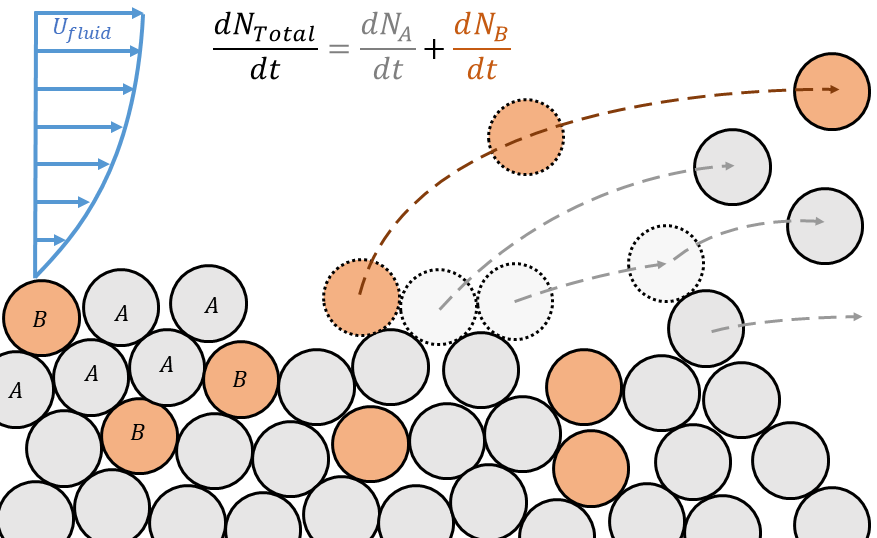Particle Resuspension in Environmental Flows
The investigation of particle resuspension in environmental flows is a current focus of fluid mechanics and requires state-of-the-art visualization and simulation techniques. Rivers alone contribute to 10-20% of the yearly release of micro-plastic (MP) debris in oceans. Yet, this release is highly seasonal, with measured emissions up to 100 times higher after heavy rainfalls. These intense emission peaks are attributed to the resuspension of MP debris, that is the re-entrainment of MP debris that have previously accumulated in sediment beds and riverbanks. The resuspension of embedded MP in turbulent flows, either in real-life riverine flows or under laboratory conditions still lacks proper investigations. Reasons behind the few numbers of studies are diverse. First, resuspension is an extremely rapid process. Over 80 % of the debris usually resuspend within seconds. This in turn makes it difficult to use experimental techniques that are fast enough to properly monitor the detaching mass in space and time. Second, the opacity of the sediment bed, in which the parasite particles are trapped, does not permit optical access.
The scientific objectives are, hence, to investigate the short and long-term resuspension of MP embedded in a bed of reference particles. The project brings together 1) worldwide unique multiphase flow measurement technology solely available at Helmholtz-Zentrum Dresden-Rossendorf and 2) high-resolution simulation tools as well as a unique research laboratory for the investigation of sediment and microplastics transport at TU Dresden. We also aim at developing a unified model that can be used for practical applications, such as predicting pollution propagation in urban and natural water systems ahead of heavy rain falls based on weather forecast.
Project(s):
PRONTO: Particle resuspension in environmental flows, 2025-2027, Dresden Concept Research Group
Contributing scientists:
Gregory Lecrivain
Ronaldo Luís Höhn
 Resuspension of parasite B-particles (microplastics) entrapped in a bed of reference A-particles (sediments) by shear turbulent flow.
Resuspension of parasite B-particles (microplastics) entrapped in a bed of reference A-particles (sediments) by shear turbulent flow.
Publications:
[1] Banari A., Graebe K., Rudolph M., Mohseni E., Lorenz P., Zimmer K., Hubner R., Henry C., Bossy M., Hampel U. and Lecrivain G. (2023), Influence of engineered roughness microstructures on adhesion and turbulent resuspension of microparticles, Journal of Aerosol Science 174, 106258, DOI: https://doi.org/10.1016/j.jaerosci.2023.106258
[2] Banari A., Hertel D., Schlink U., Hampel U. and Lecrivain G. (2023), Simulation of particle resuspension by wind in an urban system. Environmental Fluid Mechanics 23, 41–63, DOI: https://doi.org/10.1007/s10652-022-09905-x
[3] Banari A., Henry C., Eidt R.H.F., Lorenz P., Zimmer K., Hampel U. and Lecrivain G. (2021), Evidence of collision-induced resuspension of microscopic particles from a monolayer deposit, Physical Review Fluids 6, L082301, DOI: https://doi.org/10.1103/PhysRevFluids.6.L082301
